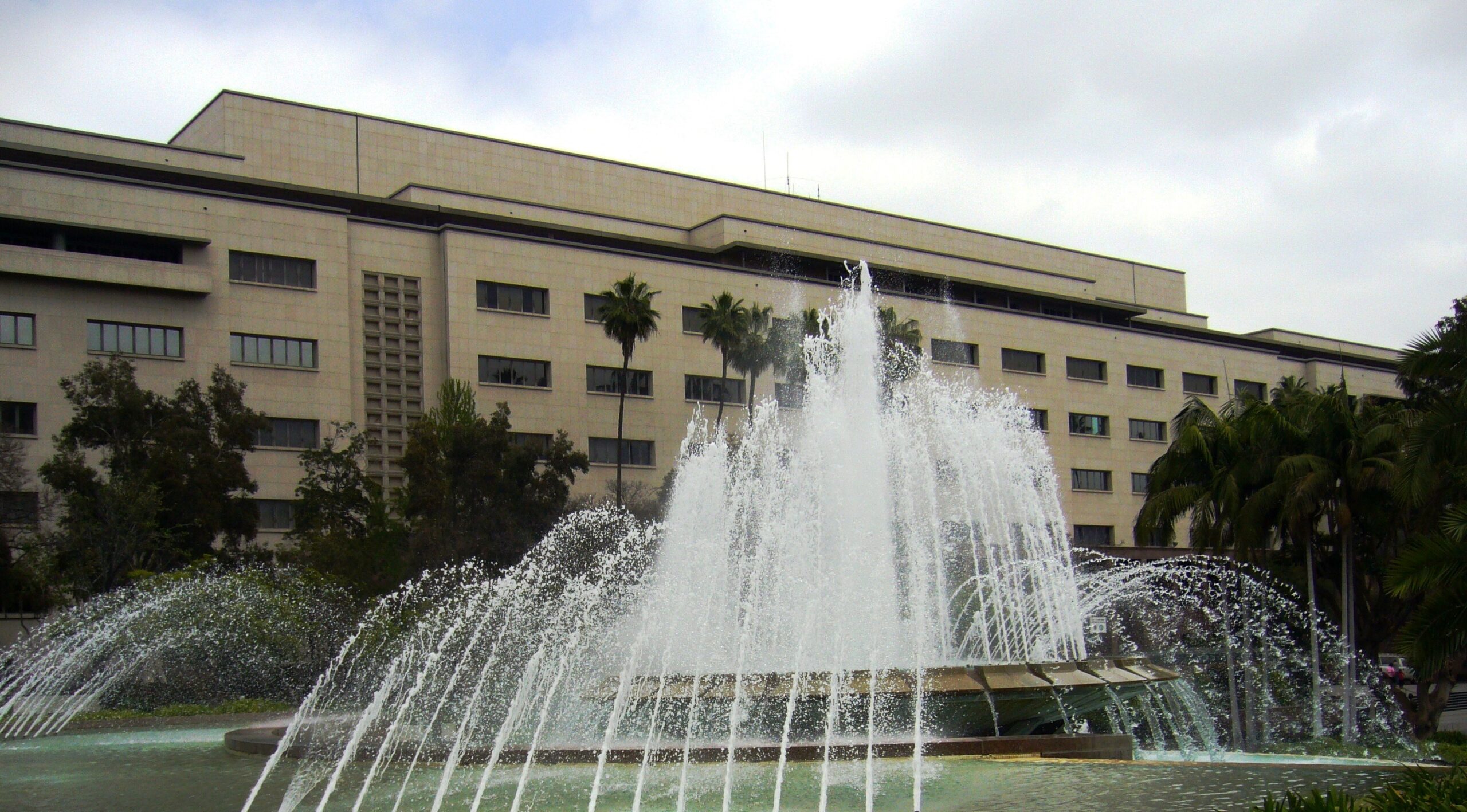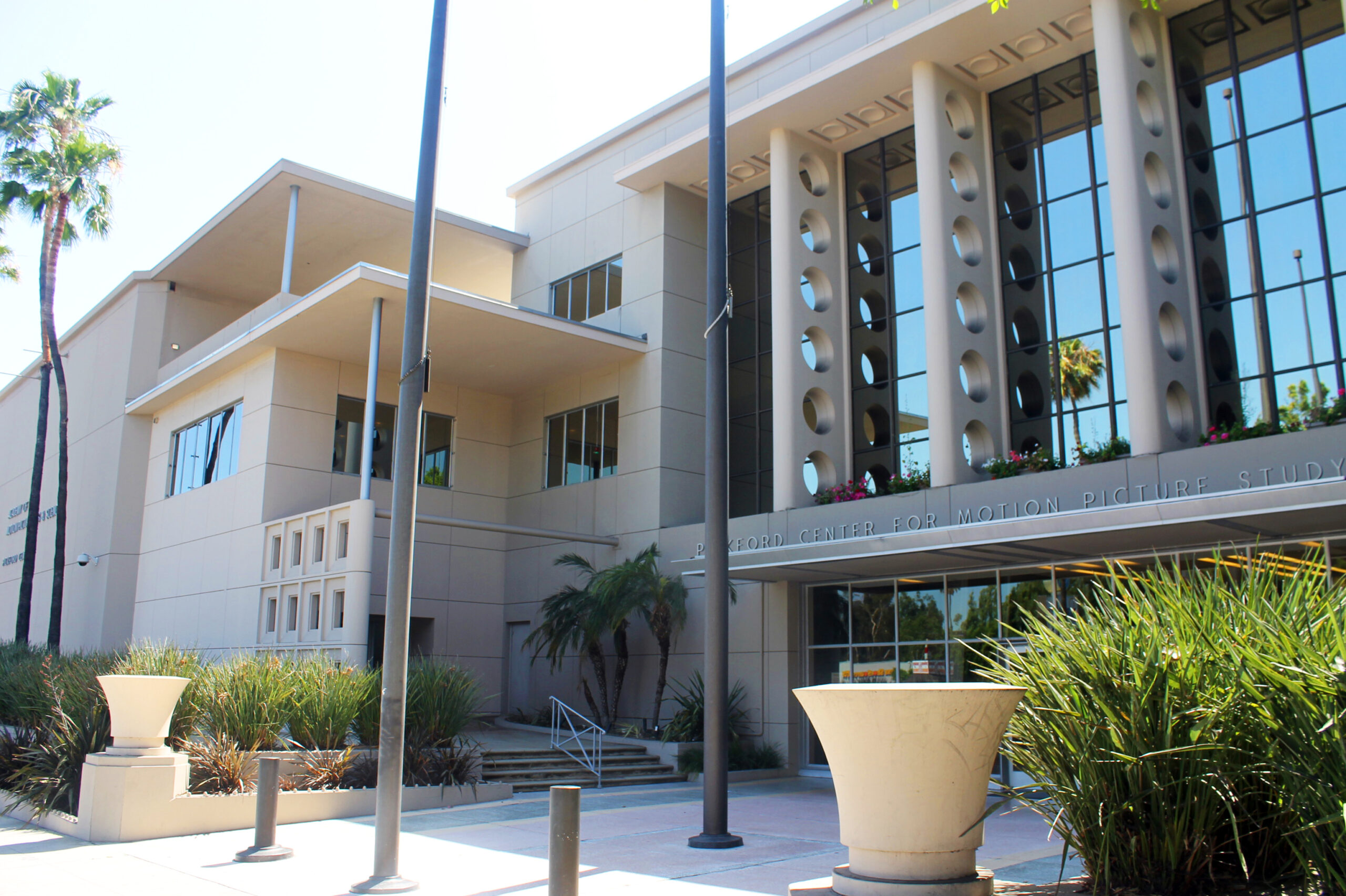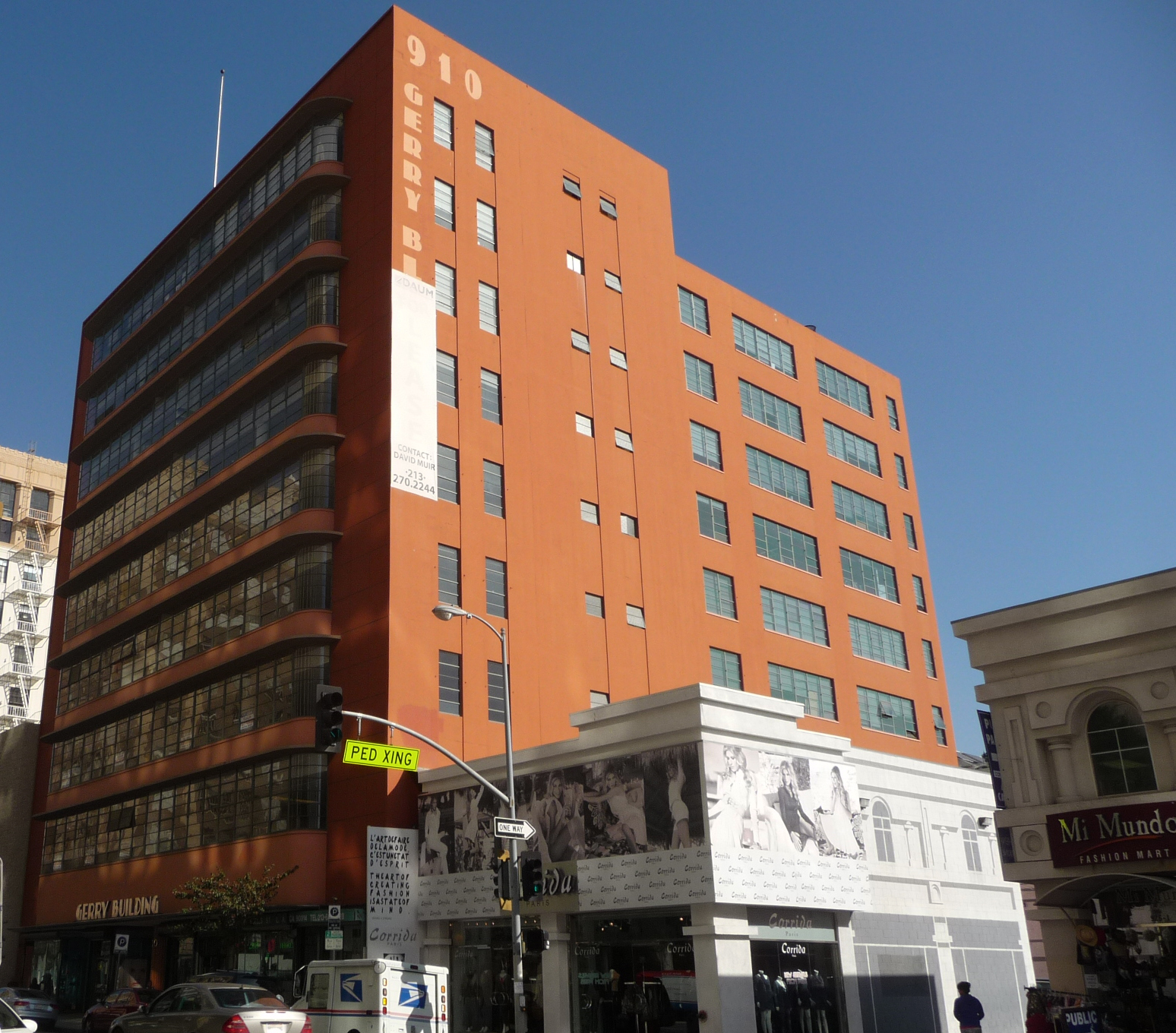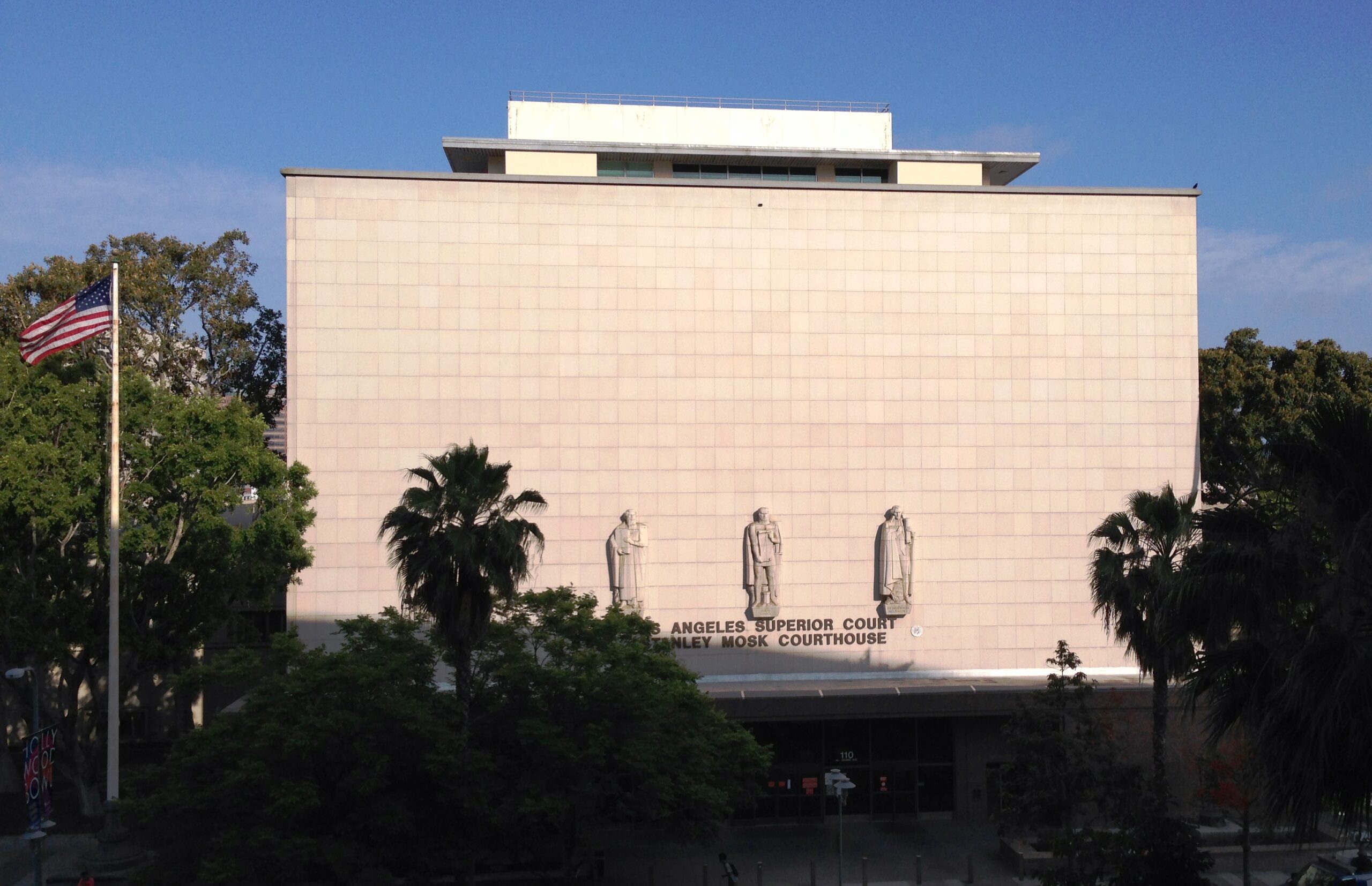
Place
Stanley Mosk Courthouse / Los Angeles County Courthouse
Conceived as part of the 1947 Civic Center Master Plan, the Los Angeles County Courthouse, along with the adjacent Los Angeles County Hall of Administration, were designed simultaneously by a team of noted, local architects and artists of the period.
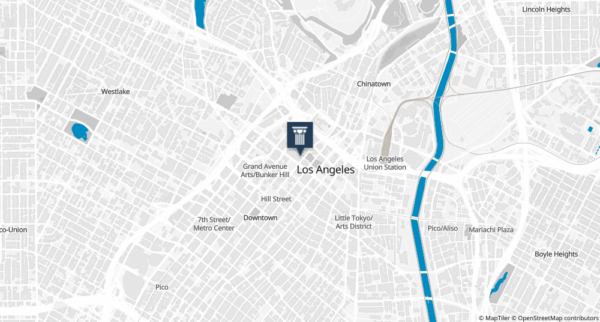
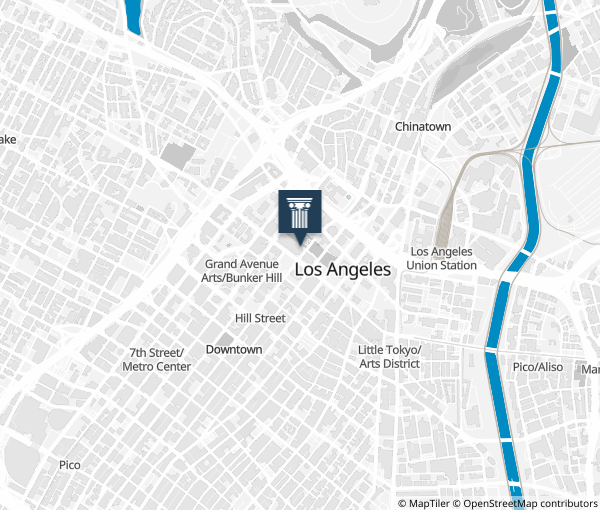
Place Details
Address
Get directions
Year
Style
Decade
Property Type
Community
The Los Angeles County Courthouse, along with the adjacent Los Angeles County Hall of Administration, were designed simultaneously by a team of noted, local architects and artists of the period. Both buildings were conceived as part of the 1947 Civic Center Master Plan, a monumental plan that transformed a large portion of Bunker Hill through the westward expansion of the Civic Center and created the east-west axis of government buildings that frame today’s Grand Park.
The County Courthouse was completed in 1958 and formally opened on January 5, 1959. Los Angeles County had gone nearly twenty-six years without a dedicated courthouse structure after the previous 1891 sandstone courthouse was damaged in the 1933 Long Beach earthquake. The Los Angeles Times noted that the architects of the present courthouse, which is home to both municipal courts and superior courts, designed it to last 250 years.
The County Courthouse was renamed in 2002 in honor of Stanley Mosk, who was the longest serving justice on the California Supreme Court and earlier served as Attorney General of California.
The Conservancy does not own or operate the Stanley Mosk Courthouse/Los Angeles County Courthouse. For any requests, please contact the Stanley Mosk Courthouse/Los Angeles County Courthouse directly at (213) 633-1070.
